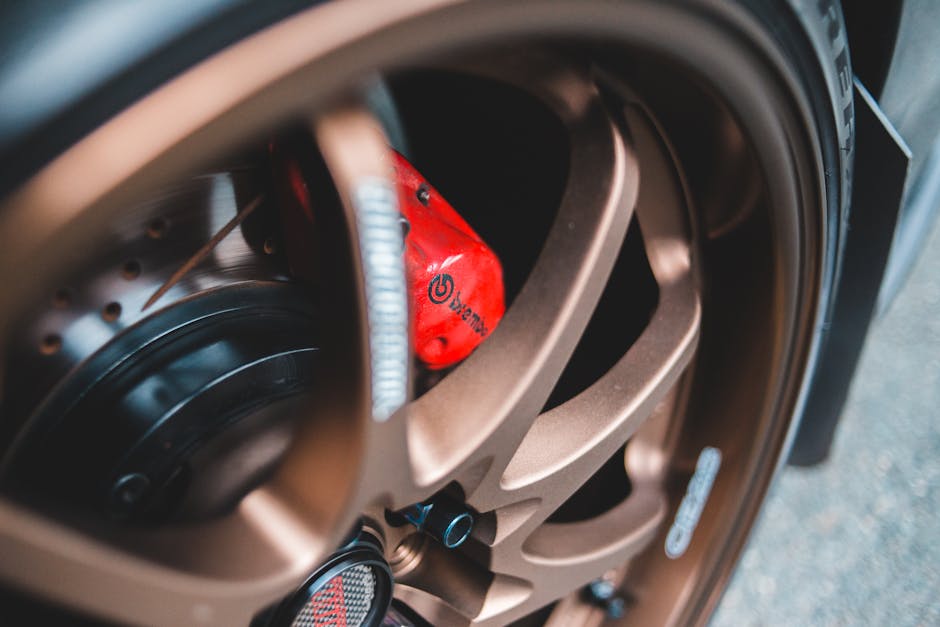Kia Stinger: 10 Powerful Reasons to Love This Iconic Car
The Bold Evolution of Kia’s Sport Sedan
The Kia Stinger is a mid-size liftback sports sedan produced from 2017 to 2023 that challenged conventional luxury performance car expectations. Here’s what you need to know:
- Production Years: 2018-2023 model years
- Engine Options: 2.5L turbo I4 (300hp) or 3.3L twin-turbo V6 (368hp)
- Performance: 0-60 mph in as little as 4.7 seconds (V6 AWD)
- Price Range: $37,135 (GT-Line) to $51,890 (GT2) for 2023 models
- Cargo Space: 23.3 cubic feet (seats up), 40.9 cubic feet (seats folded)
- Safety: IIHS Top Safety Pick+ and 5-star NHTSA rating
- Warranty: 5-year/60,000-mile basic, 10-year/100,000-mile powertrain
The Kia Stinger represents one of the most ambitious projects in Kia’s history. Developed under the leadership of former BMW M engineer Albert Biermann, this sports sedan was designed to compete directly with established European luxury brands while offering superior value.
With its low-slung silhouette, fastback design, and rear-wheel drive platform (with available all-wheel drive), the Stinger delivered on its promise of genuine sports car performance combined with everyday practicality. The vehicle underwent extensive testing, including over 10,000 kilometers at Germany’s demanding Nürburgring Nordschleife circuit.
“No detail was too small to be obsessed over,” said Orth Hedrick, Executive Director of Car Product & Telematics at Kia during the Stinger’s development.
Despite earning critical acclaim and developing a devoted following, the Stinger was discontinued in 2023 after just one generation. Kia celebrated its departure with limited Tribute Edition models while reportedly developing an electric successor codenamed GT1 for potential 2026 release.

Kia stinger terms at a glance:
The Legacy of the Kia Stinger
The Kia Stinger wasn’t just another sedan—it was a statement. With its head-turning liftback styling and performance-focused DNA, this D-segment challenger carved out a unique space in the automotive landscape from 2017 to 2023. Unlike conventional three-box sedans, the Stinger brought something fresh to the table: genuine sports car credentials wrapped in practical everyday packaging.
What made the Stinger truly special was its ambitious positioning. Here was a Korean brand offering rear-wheel-drive thrills and potent engines at prices that made German competitors seem overpriced. The fastback design wasn’t just about looking good—though it certainly did that—it delivered SUV-rivaling cargo space while maintaining an athletic, coupe-like silhouette.
Behind the scenes, former BMW M division vice president Albert Biermann brought European performance credibility to the project. His influence was unmistakable in everything from the chassis tuning to the driving position. The Stinger felt like a car developed by enthusiasts, for enthusiasts.
Despite earning passionate fans and glowing reviews, the Kia Stinger remained something of a hidden gem throughout its single-generation run. Sales numbers never matched its critical acclaim, but its importance to Kia’s brand change can’t be overstated—it showed the world that Kia could build a world-class performance car that punched well above its price point.
Model Years & Discontinuation of the Kia Stinger
The Kia Stinger’s journey was relatively brief but impactful:
- Start of Production: October 2017
- Model Years: 2018–2023
- End of Production: April 2023
The 2022 refresh breathed new life into the Stinger with meaningful improvements across the board. The exterior received sharper lighting signatures and subtle styling tweaks, while interior materials were upgraded with more premium touches. Under the hood, the original 2.0L turbo gave way to a more potent 2.5L unit, and the twin-turbo V6 gained a modest bump to 368 horsepower along with a variable exhaust system that finally gave the Stinger the voice it deserved.
By early 2023, however, the writing was on the wall. Despite the Stinger’s excellence, several realities conspired against it: sedan sales continued their industry-wide decline, production volumes remained modest, and Kia’s corporate focus shifted decisively toward electrification. Resources previously dedicated to performance gasoline models were redirected to EV development.
The final Kia Stinger rolled off the assembly line in April 2023, closing a chapter that, while short, helped transform perceptions of what a Kia could be.

Special & Final Editions
Throughout its life, the Kia Stinger received several special editions that showcased its sporting credentials and created future collector opportunities.
The GTS Special Edition made waves in 2020 with its drift-focused AWD system—a feature that let drivers indulge their inner Ken Block with a dedicated drift mode. Limited to just 800 examples, the GTS stood out with its eye-catching “Federation” orange paint and carbon fiber trim elements.
For 2022, the Apex Edition brought some visual attitude to the refreshed GT-Line model. Building on the new 2.5L turbo engine, the Apex added blacked-out wheels with orange accents and a sportier exhaust note that gave the four-cylinder some much-needed character.
As production wound down, Kia introduced the Grand Tourer Edition, emphasizing the Stinger’s luxury credentials with unique color combinations and premium amenities. This edition highlighted the Stinger’s dual nature as both sports car and comfortable grand tourer.
The final farewell came in the form of the Tribute Edition—limited to just 1,000 units worldwide. These special Stingers received exclusive Moonscape matte gray paint covering their sculpted bodies, while inside, rich Terracotta Nappa leather and carbon fiber trim created a cabin worthy of cars costing twice as much. Each Tribute Edition featured numbered door sill plates and unique 19-inch black wheels, ensuring their place as the most collectible Stingers ever made.
These special editions weren’t just marketing exercises—they represented the Kia Stinger at its most focused and refined, giving enthusiasts something to cherish long after production ended. While rumors of an electric GT1 successor continue to circulate, these limited models ensure the original Stinger’s legacy will endure in garages and at car shows for decades to come.
Kia Stinger Performance & Engineering
The heart and soul of the Kia Stinger lies in its performance credentials. This isn’t just another sedan with sporty styling—it’s a genuine performance machine built from the ground up to deliver thrills behind the wheel.
When you slide into the driver’s seat of a Stinger, you’re greeted by a vehicle built on a dedicated rear-wheel-drive platform (with available all-wheel drive) that feels planted and responsive from the first press of the accelerator. This isn’t a coincidence—it’s the result of passionate engineering.
By the final model year, Stinger buyers could choose between two impressive engines:
The 2.5L Turbocharged Inline-4 delivers a robust 300 horsepower and 311 lb-ft of torque, launching the car from 0-60 mph in about 5.3 seconds. That’s plenty quick for daily driving and weekend fun.
For those craving more power, the 3.3L Twin-Turbocharged V6 steps things up with 368 horsepower and 376 lb-ft of torque. This powerhouse cuts the 0-60 sprint down to just 4.7 seconds with all-wheel drive—quick enough to surprise many dedicated sports cars.
Both engines pair with a responsive 8-speed automatic transmission featuring paddle shifters that let you take control when the mood strikes. The GT2 trim doesn’t stop there, adding Brembo brakes with 4-piston front calipers, a limited-slip differential on rear-drive models, launch control, electronically controlled suspension, and variable ratio steering.
The engineering team, led by former BMW M executive Albert Biermann, put the Kia Stinger through its paces at Germany’s legendary Nürburgring Nordschleife. This demanding circuit has broken many promising cars, but the Stinger emerged with a chassis that beautifully balances everyday comfort with impressive handling capabilities.

Engines & Specs: Kia Stinger Powertrains
The Kia Stinger’s engine lineup evolved throughout its production, culminating in two impressive options that blend performance with reasonable efficiency.
The Smartstream 2.5L Turbocharged Inline-4 found in GT-Line models features an aluminum block and head with direct injection. It produces 300 hp at 5,800 rpm and 311 lb-ft of torque available from just 1,650 rpm. With a 10.5:1 compression ratio and a single twin-scroll turbocharger, this engine provides brisk acceleration with a 0-60 time of 5.3 seconds in rear-drive form (5.2 with AWD) and a top speed of 130 mph.
Step up to the Lambda II 3.3L Twin-Turbocharged V6 in GT1 and GT2 trims, and you’ll enjoy 368 hp at 6,000 rpm and 376 lb-ft of torque from a basement-level 1,300 rpm. The twin single-scroll turbos help this engine deliver impressive acceleration—4.9 seconds to 60 mph with rear-wheel drive and 4.7 seconds with all-wheel drive. Top speed? A genuinely impressive 167 mph with summer tires.
Kia’s in-house 8-speed automatic transmission offers multiple personalities through its drive modes: Eco, Comfort, Sport, Smart, and Custom. It features rev-matching on downshifts and, in GT models, launch control for consistent quick starts.
The GT models also include a variable exhaust system that improves the engine note during spirited driving. Using electronically controlled valves, the system adjusts exhaust flow and sound based on your chosen driving mode and throttle position—giving you a subdued purr for daily driving or a more aggressive growl when you’re having fun.
Handling & Driving Dynamics of the Kia Stinger
The Kia Stinger delivers handling that genuinely surprises first-time drivers, especially those who might underestimate what Kia is capable of engineering.
With its lengthy 114.4-inch wheelbase, the Stinger provides excellent high-speed stability while maintaining agility in tighter corners. The near 50/50 weight distribution in V6 AWD models contributes to balanced handling that feels natural and predictable.
The suspension setup—MacPherson struts up front and a multi-link arrangement in the rear—strikes an excellent balance between comfort and control. GT2 models feature an electronically controlled suspension system that continuously adjusts damping forces based on road conditions and your driving style. This technology allows the Stinger to transform from a comfortable highway cruiser to a corner-carving sports sedan at the push of a button.
All-wheel drive Stingers include a sophisticated torque-vectoring system that can distribute power not just between front and rear axles but also between the left and right rear wheels. In Sport mode, the system sends more power rearward, preserving the engaging rear-drive feel that enthusiasts crave.
Tire selection plays a crucial role in the Stinger’s handling character. GT-Line models come with 18-inch wheels and all-season tires, while GT1 and GT2 trims can be equipped with 19-inch wheels wrapped in sticky Michelin Pilot Sport 4 summer rubber.
The Kia Stinger’s Nürburgring development shines through in real-world driving, with composed handling at high speeds and through challenging corners. While some reviewers note that steering feel could be more communicative, the overall chassis balance and grip levels have earned consistent praise from automotive journalists and owners alike.
Fuel Economy & Real-World Efficiency
Despite its performance focus, the Kia Stinger won’t punish your wallet at the gas pump—at least not too severely.
According to scientific research on fuel economy, EPA ratings for the final model year were reasonable for a performance car of this caliber:
The 2.5L Turbocharged Inline-4 achieves 22 mpg city, 32 mpg highway, and 25 mpg combined with rear-wheel drive. Opting for all-wheel drive drops those figures slightly to 21 city, 29 highway, and 24 combined.
The more powerful 3.3L Twin-Turbocharged V6 naturally consumes more fuel, with ratings of 18 mpg city, 25 mpg highway, and 20 mpg combined for rear-drive models. All-wheel drive V6 models rate at 17 city, 24 highway, and 20 combined.
In real-world testing, Car and Driver achieved 26 mpg in their 75-mph highway test with the V6 AWD model—actually exceeding the EPA highway rating. Owner experiences vary significantly based on driving style, with enthusiastic driving of V6 models often resulting in mid-teens mpg in mixed use.
Your driving mode selection makes a noticeable difference in fuel consumption. Eco mode optimizes shift points and throttle response for efficiency, while Sport mode prioritizes performance over fuel economy. The clever Smart mode adapts to your driving style automatically, finding the sweet spot between fun and frugality.
With its 15.9-gallon fuel tank, the most efficient Kia Stinger configuration (2.5L RWD) offers a theoretical highway range of approximately 508 miles—enough for extended road trips without frequent stops. Even the thirstiest version (3.3L AWD) provides a highway range of about 382 miles, keeping fuel stops reasonably spaced for most journeys.
For more detailed information about performance vehicles like the Stinger, check out our comprehensive guide to Sports Car Specifications.
Features, Tech & Safety
The Kia Stinger doesn’t just look good – it’s packed with practical features that make everyday driving a pleasure. What really sets the Stinger apart is its clever hatchback design, giving you a generous 23.3 cubic feet of cargo space with the rear seats up. Need to haul something bigger? Fold those seats down and you’ll open up an impressive 40.9 cubic feet – perfect for weekend getaways or that ambitious IKEA run.
Step inside and you’ll immediately notice the premium feel. Higher trims spoil you with buttery Nappa leather, a suede headliner, and genuine carbon fiber or aluminum trim pieces. The cockpit wraps around you like a high-end sports car, with a substantial leather-wrapped steering wheel and seats that manage to be both comfortable for long drives and supportive when you’re attacking corners.
After the 2022 refresh, the Kia Stinger’s tech game reached new heights. The centerpiece is a crisp 10.25-inch touchscreen infotainment system that’s both responsive and intuitive. Wireless Apple CarPlay and Android Auto come standard, while audiophiles will appreciate the optional Harman Kardon 15-speaker system that fills the cabin with rich, detailed sound.
Other tech goodies include a 7-inch digital instrument display, a head-up display that projects key info onto the windshield, wireless phone charging, and Kia Connect services that let you remotely start your car or check its status from your smartphone.

Safety isn’t an afterthought in the Stinger. With both an IIHS Top Safety Pick+ rating and NHTSA’s 5-star overall safety rating, this sports sedan takes protection seriously. The impressive suite of safety tech includes Blind-Spot Collision Warning, Smart Cruise Control with Stop & Go functionality, Forward Collision-Avoidance Assist with Junction Turning (which helps prevent unsafe left turns), Lane Keeping Assist, and Rear Cross-Traffic Collision-Avoidance Assist. The available Surround View Monitor gives you a bird’s-eye view when parking, while the Safe Exit Warning prevents you from opening your door into oncoming traffic or cyclists.
Interior Space & Cargo
The Kia Stinger’s interior strikes that perfect balance between sporty flair and everyday usability. Up front, you’ll find generous headroom (38.3 inches) and legroom (42.6 inches) that accommodates even taller drivers. The rear seats offer decent space with 37.0 inches of headroom and 36.4 inches of legroom – though taller passengers might notice the sloping roofline cutting into headspace a bit.
What truly separates the Stinger from traditional sports sedans is its practical cargo area. The liftback design creates a wide opening that makes loading bulky items a breeze. While the sloping rear glass limits the height somewhat, the sheer volume more than makes up for it. With 23.3 cubic feet behind the rear seats, you can easily fit multiple suitcases or a substantial grocery haul. Fold those seats down and the flat load floor reveals 40.9 cubic feet of space – significantly more than what you’d find in competitors like the BMW 4 Series Gran Coupe.
The cabin materials impress at every trim level. Even the base GT-Line treats you to leather seating surfaces and soft-touch materials on the dashboard and door panels. Step up to the GT1 for higher-grade leather and aluminum accents, or go all-out with the GT2’s sumptuous Nappa leather, suede headliner, and genuine carbon fiber or aluminum trim.
The interior design draws inspiration from aircraft, with circular air vents reminiscent of jet turbines and a cockpit-like driver’s area. The center console angles slightly toward the driver – a subtle touch that improves ergonomics and emphasizes the Stinger’s driver-focused nature.
Infotainment & Driver-Assist Suite
The Kia Stinger’s technology offerings received a significant boost with the 2022 refresh. The infotainment system centers around a responsive 10.25-inch touchscreen (earlier models had an 8-inch screen) with crisp graphics and an intuitive interface. Wireless Apple CarPlay and Android Auto come standard, eliminating the need for cables cluttering your console.
The system supports natural voice recognition for easier control while driving, and the split-screen functionality lets you view navigation and audio information simultaneously. Map updates happen over-the-air, keeping your navigation current without dealer visits. The available Harman Kardon 15-speaker audio system with Clari-Fi technology restores detail to compressed music, delivering concert-like sound quality.
Digital displays abound in the Stinger. The 7-inch TFT LCD instrument cluster provides customizable information, while the available head-up display projects speed, navigation directions, and safety alerts directly onto the windshield. Both displays can change themes to match your selected drive mode – a cool touch that improves the driving experience.
Connectivity features are thoroughly modern. Multiple USB ports (both front and rear) keep everyone’s devices charged, while the wireless charging pad handles compatible smartphones without cables. The Kia Connect app transforms your phone into a remote control for your Stinger – start the engine, set the climate control, or check vehicle status from anywhere.
The driver assistance tech nearly approaches autonomous driving in certain conditions. The Smart Cruise Control with Stop & Go handles acceleration and braking in traffic, while Lane Following Assist keeps you centered in your lane. On highways, these systems work together as Highway Driving Assist for a semi-autonomous experience.
Safety systems provide comprehensive protection. Forward Collision-Avoidance Assist watches for vehicles, pedestrians, and cyclists, while Junction Turning detection helps prevent risky left turns. The Blind-Spot View Monitor shows a live camera feed of your blind spot in the instrument cluster when you signal, and Rear Cross-Traffic Collision-Avoidance Assist watches your back when reversing. For parking, the Surround View Monitor provides a 360-degree view with guidance lines.
Safety Ratings & Warranty
Safety wasn’t an afterthought in the Kia Stinger’s development – it was a priority. The results speak for themselves with impressive crash test ratings from both major safety organizations.
The Insurance Institute for Highway Safety (IIHS) awarded the Stinger its coveted Top Safety Pick+ designation – the highest possible rating. The Stinger earned “Good” ratings in all crashworthiness categories and a “Superior” rating for its front crash prevention systems.
The National Highway Traffic Safety Administration (NHTSA) was similarly impressed, giving the Stinger a 5-Star Overall Safety Rating. This breaks down to a 4-Star Frontal Crash Rating and perfect 5-Star ratings for both Side Crash and Rollover tests.
These excellent ratings stem from the Stinger’s thoughtful safety engineering. The body structure incorporates high-strength steel in critical areas to create a protective safety cage. Multiple airbags – including dual front, front side-impact, side curtain, and a driver’s knee airbag – provide comprehensive protection in a collision.
Reliability has proven strong for the Kia Stinger, with J.D. Power giving it an impressive score of 87 out of 100. This places it among the more dependable vehicles in its segment, giving owners peace of mind for the long haul.
Perhaps the most compelling ownership advantage is the Stinger’s industry-leading warranty coverage. While European competitors typically offer 4-year/50,000-mile basic warranties, the Stinger blows them away with:
Basic Warranty: 5 years or 60,000 miles
Powertrain Warranty: 10 years or 100,000 miles
Roadside Assistance: 5 years or 60,000 miles
Anti-Perforation Warranty: 5 years or 100,000 miles
This warranty coverage represents tremendous value, especially for those planning to keep their Stinger beyond the typical 3-year lease period. The 10-year/100,000-mile powertrain warranty in particular provides exceptional peace of mind regarding the most expensive potential repairs.
For more information about what features to expect in modern luxury vehicles, check out our guide to Luxury Car Features or review the latest scientific research on crash safety.
Kia Stinger vs The Competition
When the Kia Stinger roared onto the scene, it didn’t just join the sports sedan segment—it crashed the party with a compelling combination of performance, practicality, and value that made the established players take notice.
The luxury fastback segment has long been dominated by European nameplates, with each bringing their unique flavor to the table. The BMW 4 Series Gran Coupe offers that quintessential German engineering with precise handling. The Audi S5 Sportback delivers quattro all-wheel-drive confidence wrapped in sophisticated design. Meanwhile, the Genesis G70, the Stinger’s corporate cousin, packages similar mechanical bits in a more traditional three-box sedan format.
What made the Kia Stinger such a refreshing alternative wasn’t just its striking design—it was the value proposition. While a fully-loaded Stinger GT2 would set you back about $52,000, a comparably equipped German competitor could easily venture north of $60,000. That’s serious money left in your pocket without sacrificing performance.
| Model | Base MSRP (2023) | Engine | Horsepower | 0-60 mph | Cargo Space | Warranty |
|---|---|---|---|---|---|---|
| Kia Stinger GT2 | $51,890 | 3.3L Twin-Turbo V6 | 368 hp | 4.7 sec | 23.3 cu ft | 10yr/100k mi |
| BMW 430i GC | $47,900 | 2.0L Turbo I4 | 255 hp | 5.8 sec | 16.6 cu ft | 4yr/50k mi |
| Audi S5 Sportback | $56,395 | 3.0L Turbo V6 | 349 hp | 4.5 sec | 21.8 cu ft | 4yr/50k mi |
| Genesis G70 3.3T | $45,745 | 3.3L Twin-Turbo V6 | 365 hp | 4.7 sec | 10.5 cu ft | 10yr/100k mi |
Speaking of performance, the Kia Stinger could hang with the best of them. The 3.3-liter twin-turbo V6 delivered a hearty 368 horsepower—enough to rocket from 0-60 mph in just 4.7 seconds. That’s genuine sports sedan territory, putting it right in the mix with competitors costing thousands more.
But perhaps the Stinger’s most practical advantage was its liftback design. With 23.3 cubic feet behind the rear seats—more than double what you’d find in the G70 and significantly more than the BMW—the Stinger could swallow weekend luggage, golf clubs, or an impromptu IKEA haul with equal ease. Fold those rear seats down, and you’re looking at SUV-rivaling cargo space.
The Kia Stinger wasn’t without its challenges, though. Despite tremendous strides in quality and perception, the Kia badge didn’t carry the same cachet as the storied German marques. Some buyers simply couldn’t get past the badge, even if what was behind it represented a tremendous value.
Interior quality was another area where some reviewers felt the Stinger fell just short of its European competition. While materials were generally excellent, especially in higher trims, some of the switchgear and secondary controls lacked the tactile precision found in an Audi or BMW.
Initially, resale values for the Kia Stinger lagged behind its European rivals—a common challenge for newcomers in the luxury space. However, as the model established its reputation for reliability and performance, this gap narrowed considerably, making the Stinger an increasingly smart long-term purchase.
What truly set the Stinger apart was its warranty coverage. While the Germans typically offered 4-year/50,000-mile basic warranties, Kia backed the Stinger with an industry-leading 10-year/100,000-mile powertrain warranty. For buyers planning to keep their vehicles beyond the typical lease period, this represented significant peace of mind and potential savings.
The Kia Stinger ultimately carved out its niche as the thinking enthusiast’s choice—a car for drivers who cared more about the driving experience and value than impressing the valet. It may not have conquered the segment in sales volume, but it certainly won the hearts of those who valued substance over status.
Buying Guide & Ownership Insights for Kia Stinger
So you’re thinking about bringing a Kia Stinger home? Smart choice! Whether you’re eyeing a brand-new model from the final production year or hunting for a pre-loved gem, there’s a lot to consider before taking the plunge.
Pricing New vs Used Kia Stinger
When the Kia Stinger rolled off the assembly line for the last time in 2023, it came with a price tag that reflected its premium positioning while still undercutting European rivals. The base GT-Line with that zippy 2.5L turbo started at $37,135, while the middle-child GT1 with the beastly twin-turbo V6 asked for $44,735. If you wanted all the bells and whistles, the top-tier GT2 commanded $51,890 before you even factored in the $1,095 destination charge or the $2,200 premium for all-wheel drive.
The limited-run Tribute Edition—Kia’s fond farewell to its performance flagship—added about $3,000 to the GT2’s sticker price, assuming you could find one of the 1,000 units made worldwide.
On the used market, Kia Stinger prices have held up surprisingly well. The average used Stinger goes for around $28,667, though what you’ll actually pay depends on a constellation of factors including year, trim, mileage, and whether it sends power to just the rear wheels or all four corners.
If you’re hunting for the sweet spot in value, a new 2023 GT1 with AWD offered the best balance of thrilling performance and luxury features without the GT2’s premium price. For used shoppers, a 2022 GT2 with reasonable miles on the clock gives you the refreshed styling and full luxury treatment at a significant discount.
Don’t overlook Certified Pre-Owned Stingers, which offer that goldilocks zone of value with the remainder of the original 10-year/100,000-mile powertrain warranty plus additional CPO coverage. Peace of mind doesn’t come cheap, but it sure helps you sleep at night!
Reliability, Maintenance & Warranty Experience
The good news? The Kia Stinger has proven itself a pretty dependable companion, earning a solid 87 out of 100 from J.D. Power for reliability—better than many of its European counterparts.
That’s not to say it’s perfect. Early production models sometimes suffered from electrical quirks that would make your dashboard look like a Christmas tree. Some owners have griped about brakes wearing faster than expected, especially if you enjoy exercising that twin-turbo V6 with enthusiasm. The 2018-2019 models occasionally had transmission hiccups, and certain paint colors haven’t aged as gracefully as others.

When it comes to keeping your Stinger in tip-top shape, you’re looking at oil changes every 7,500 miles (synthetic only, please), brake service typically every 30,000-40,000 miles (sooner if you’re heavy-footed), transmission fluid at 60,000 miles, and spark plugs at either 45,000 miles (2.5L) or 100,000 miles (3.3L). Most owners report spending between $400-600 annually on maintenance—substantially less than what their friends with German sports sedans are shelling out.
One of the unexpected perks of Kia Stinger ownership is the vibrant online community. Dedicated forums are treasure troves of DIY guides and troubleshooting wisdom from fellow enthusiasts. Parts availability has been solid during production, though it’s worth considering how that might change down the road given the model’s limited production run.
And let’s not forget that warranty! Kia’s 5-year/60,000-mile basic warranty and 10-year/100,000-mile powertrain coverage remain the gold standard in the industry. This generous protection means you can enjoy those twin turbos without the nagging fear of a catastrophic repair bill that keeps many European sports sedan owners up at night.
Pros & Cons of Owning a Kia Stinger
Like any relationship, living with a Kia Stinger has its highs and lows. Let’s be honest about both.
On the bright side, you’re getting genuine sports sedan performance that punches well above its price tag. The practical liftback design means you can haul a surprising amount of stuff without resorting to an SUV. That industry-leading warranty removes much of the financial anxiety from the sports car ownership experience.
The Stinger’s head-turning styling ensures you’ll never lose it in a parking lot, and even the base models come loaded with features that would cost thousands extra from German manufacturers. The ride strikes that elusive balance between daily comfort and weekend fun, and the limited production numbers mean you’re joining a relatively exclusive club.
But it’s not all sunshine and burnouts. The V6 models drink premium fuel with enthusiasm, especially in stop-and-go traffic. Despite Kia’s quantum leap in quality, some folks still turn up their noses at the badge. Taller rear passengers might grumble about headroom on longer journeys, and keen eyes will spot interior materials that don’t quite match the tactile delight of Audi or BMW cabins.
The long-term resale picture remains less certain than for established luxury brands, and parts availability could become an issue years down the road. And while the Stinger is no heavyweight in the literal sense, it does carry more mass than some rivals, which shows up in the most demanding driving scenarios.
Despite these quibbles, Kia Stinger owners overwhelmingly report high satisfaction with their choice. There’s something uniquely satisfying about driving a car that delivers 90% of the premium sports sedan experience at 70% of the cost—especially when it comes with a practical hatchback and a warranty that outlasts most relationships.
For more insights on vehicles that deliver exceptional performance value, check out our guides to best luxury sports cars and car maintenance tips to keep your ride in perfect condition.
Frequently Asked Questions about the Kia Stinger
Why did the Kia Stinger get discontinued?
The story of the Kia Stinger’s discontinuation is a bit of a heartbreaker for enthusiasts. Despite winning awards and critical acclaim, several factors led to its departure after the 2023 model year.
First and foremost, the entire sedan segment has been shrinking as SUVs and crossovers dominate showrooms worldwide. Even established luxury brands have watched their sedan sales decline year after year. For the Kia Stinger, this industry-wide trend hit especially hard.
Sales numbers never quite matched Kia’s ambitious expectations, particularly in its home market of South Korea where the vehicle struggled to find enough buyers. As one Kia executive put it off the record, “It was always meant to be a halo car, not necessarily a volume seller—but we had hoped for more.”
Perhaps most significantly, Kia has pivoted hard toward electrification. Resources previously allocated to vehicles like the Stinger are now flowing into EVs like the EV6 GT, which actually outperforms the Stinger while producing zero emissions. Manufacturing capacity is precious, and Kia chose to dedicate those production lines to vehicles with broader market appeal.
The good news? The Kia Stinger may be gone, but its spirit lives on. Industry insiders report that Kia is developing an electric successor codenamed GT1, suggesting the company isn’t abandoning the performance segment—just reimagining it for an electric future.
How does the Kia Stinger handle winter driving with AWD?
When the snow starts falling, Kia Stinger owners with all-wheel drive tend to smile rather than worry. The sophisticated AWD system has earned a solid reputation among owners in colder climates.
The heart of the Stinger’s winter capability is its Dynamic Torque Vectoring Control, which intelligently distributes power not just between front and rear axles but also between the left and right rear wheels. This provides remarkable stability when roads get slick.
“I moved from a Subaru to my Stinger GT AWD and was honestly surprised at how confident it feels in Minnesota winters,” shared one owner on a popular Stinger forum. “With good winter tires, it’s an absolute tank in the snow.”
That last point bears emphasizing—tire choice matters enormously. While the AWD system provides excellent traction, the Stinger’s performance-oriented nature means that proper winter tires make a dramatic difference in cold-weather capability.
The vehicle’s drive modes also play a key role in winter driving. Switching to “Smart” or “Comfort” mode softens throttle response and adjusts transmission behavior for smoother, more controlled power delivery on slippery surfaces.
The one limitation worth noting is ground clearance. At 5.1 inches, the Kia Stinger sits lower than most crossovers or SUVs. This means you’ll need to exercise caution in deeper snow—something owners in places like Colorado and Michigan quickly learn to steer.
Overall, with appropriate tires and a bit of winter driving know-how, the Stinger AWD proves itself a capable and confidence-inspiring winter companion.
What future performance cars will replace the Kia Stinger?
While we’re saying goodbye to the Kia Stinger, the performance flag at Kia isn’t being lowered—it’s being electrified.
The most exciting replacement on the horizon is an electric sports sedan currently known by its internal codename “GT1.” According to well-placed industry sources, this vehicle is targeting a 2026 release with some truly impressive specifications. We’re talking about potential output of up to 450 kW (approximately 603 horsepower) from a dual-motor AWD setup, with a massive 113.2 kWh battery pack providing 700-800 km of range. Early performance targets suggest 0-100 km/h acceleration potentially under 3.5 seconds—significantly quicker than even the V6 Stinger.
In the meantime, the Kia EV6 GT has already stepped up as the brand’s performance standard-bearer. With 576 horsepower and a 0-60 mph time of just 3.4 seconds, it actually outguns the Stinger while offering the instant torque delivery that makes electric performance so addictive. Its electronic limited-slip differential and performance-tuned suspension show that Kia remains committed to handling dynamics, not just straight-line speed.
The Genesis brand (Kia’s luxury sibling under the Hyundai Motor Group umbrella) continues to develop the G70, which shares its platform with the Stinger and offers similar performance credentials in a more traditional luxury package.
Looking at the broader picture, the Hyundai Motor Group’s N performance division is increasingly focusing on electric performance, with models like the Ioniq 5 N demonstrating how the company plans to transfer its performance DNA into the electric era.
For Kia Stinger fans, the future may look different, but it certainly won’t be boring. The instant torque and low center of gravity inherent to electric vehicle designs may actually deliver driving experiences that surpass what was possible with the Stinger’s internal combustion powertrains—while producing zero emissions in the process.
Conclusion
The Kia Stinger has left an indelible mark on the automotive world. During its short but sweet production run from 2017 to 2023, this bold sports sedan did something remarkable – it changed how people think about Kia. No longer just a value brand, Kia proved it could build a genuine performance car that made enthusiasts sit up and take notice.
What made the Stinger special wasn’t just what was on paper. The twin-turbo V6 with 368 horsepower was impressive, but it was the soul of the car that won people over. You could feel the passion poured into every aspect – from the thousands of development miles at the Nürburgring to the driver-focused cockpit that wrapped around you like a glove. This was clearly a car built by people who love driving, for people who love driving.
The practicality was the cherry on top. With that clever liftback design providing SUV-like cargo space in a sleek, head-turning package, the Stinger was the rare performance car you could actually live with every day. And at a price point that made comparable German options seem almost silly, it delivered on the promise of accessible performance.
Though we’re saying goodbye to the Kia Stinger, its spirit lives on. The rumors of an electric GT1 successor are particularly exciting – with whispers of 450 kW (roughly 603 horsepower) and 0-60 times potentially dipping below 3.5 seconds, Kia clearly isn’t abandoning its performance ambitions. They’re just plugging them in.
For collectors and enthusiasts, the final Tribute Edition Stingers represent something special – perhaps one of the last great internal combustion sports sedans before the industry fully accepts electrification. These limited-run models, with their exclusive Moonscape matte paint and Terracotta leather interiors, may well become sought-after classics in the decades to come.
Here at Car News 4 You, we’ve always appreciated cars that punch above their weight and deliver genuine driving thrills regardless of the badge they wear. The Kia Stinger embodied this philosophy perfectly. While we’ll miss its growling exhaust note and tail-happy dynamics, we’re excited to see how its DNA shapes Kia’s future performance offerings.
For more insights into luxury performance vehicles and to stay updated on Kia’s future plans, explore our luxury coverage and keep an eye out for news about the GT1 electric sports sedan. The Stinger may be gone, but its legacy of accessible performance and practical excitement is just getting started.







